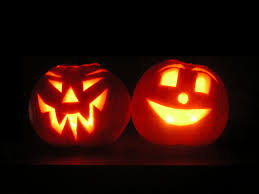It is hard to imagine, but there was once a time when Halloween was not about pillow cases full of candy and hanging fake spider webs on your porch. I know, this is a shocking statement to hear, but it is true. In a time long before we watched Sarah Jessica Parker turn to dust in Hocus Pocus and Linus wait for the Great Pumpkin’s arrival Halloween had a very different meaning. The origin of Halloween is a little unclear but many believe the holiday derives from a combination of Samhain, a Celtic holiday, and All Saints Day, a Christian holiday.
The Celts believed that on Samhain the spirits of the dead could walk among the living. Some of the Celts would wear costumes to disguise themselves from the spirits. On Samhain bonfires could be seen throughout Celtic lands to keep the spirits away from the living. As the Christian presence in Celtic communities grew, and took over, the two cultures began to merge and absorb certain traditions. November first was designated All Saints Day. All Saints Day, or Hallowmas, was created to honor Saints, especially those without their own holidays.
Many of the traditions we follow today are rooted in the original traditions of Samhain and All Saints Day. In Ireland people would carve into potatoes or turnips, and put a candle in them to ward off spirits, much like the Celtic bonfires. When Irish immigrants came to the United States they started using pumpkins instead of turnips due to the large size of some pumpkins. There is an Irish Folktale about a man named Stingy Jack who tricked the Devil several times, trapping him a tree once and as a coin in his pocket another time. When Jack died God would not let him into heaven because of his sneaky ways. The Devil would not let Jack into hell because he had tricked him too many times. So the Devil cast Jack out into the world, left to wander for the rest of time with only a lit coal to light his way. Jack placed this coal in a turnip, we now call this a Jack-O-Lantern.
Sneaky neighborhood pranks became Trick or Treating. As time progressed pranks became more common on Halloween. In the nineteenth century children would wear masks to disguise themselves as they played pranks on their neighbors. The pranks became so unnerving the neighbors and shop owners would bribe the children to stop the pranks with candy and other treats. The saying ‘Trick or Treat’ was a very real threat.
Another origin story of Trick or Treating is the practice of Souling. In Britain and Ireland people would go door to door saying prayers for the dead in exchange for food.
It does not matter which origin story you believe one thing is certain, Halloween has come a long way. If you wish to survive this haunted night make sure you’ve got your jack-o-lanterns lit to ward off the spirits and a bowl of candy ready to ward off the pranksters. If you follow these steps you’re certain to make it through the night.
If you have taken all of the proper precautions and are ready to settle in for the night put on your finest witch hat, start the popcorn, push play on your favorite horror movie, and have a happy Halloween!
History Channel:History of Halloween!
